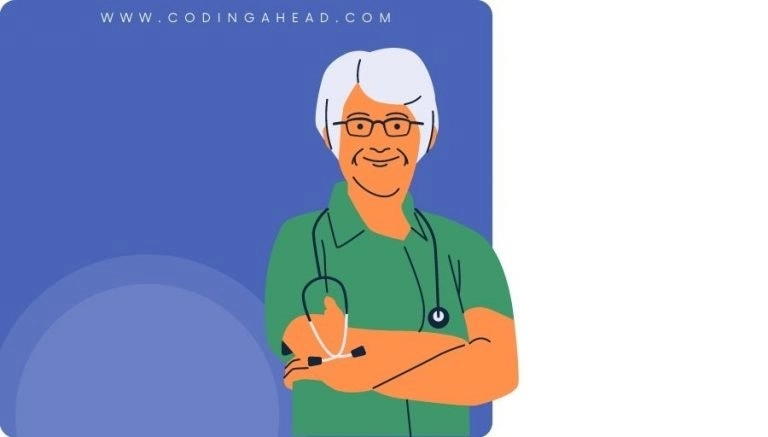How To Use CPT Code 97755
CPT 97755 describes the process of assistive technology assessment performed by a provider to determine the best assistive technology for a patient with a disability. This article will cover the description, procedure, qualifying circumstances, appropriate usage, documentation requirements, billing guidelines, historical information, similar codes and billing examples.
1. What is CPT Code 97755?
CPT 97755 can be used to describe the comprehensive assessment performed by a provider to identify assistive technology devices or services that will help a patient with a disability improve their functional capabilities. This code is used when the provider performs an assessment of the patient’s physical environment, analyzing the difficulties resulting from the lost function, and selecting the adaptive device that will best suit the patient’s needs.
2. Official Description
The official description of CPT code 97755 is: ‘Assistive technology assessment (eg, to restore, augment or compensate for existing function, optimize functional tasks and/or maximize environmental accessibility), direct one-on-one contact, with written report, each 15 minutes.’
3. Procedure
- The provider performs a comprehensive assessment of the patient’s physical environment and analyzes the difficulties resulting from the lost function.
- Based on the assessment, the provider selects the assistive technology device or service that will best restore, augment, or compensate for the patient’s existing function.
- The provider engages in direct one-on-one contact with the patient to evaluate the effectiveness of the chosen assistive technology and make any necessary adjustments.
- Throughout the assessment process, the provider prepares a written report documenting the findings and recommendations.
4. Qualifying circumstances
Patients eligible to receive CPT 97755 services are those with a physical, sensory, cognitive, or developmental impairment that requires an assistive technology assessment. The provider must be present in direct one-on-one contact with the patient and prepare a written report of the assessment. This code is not applicable for augmentative and alternative communication devices, which have their own specific codes (92605, 92607).
5. When to use CPT code 97755
CPT code 97755 should be used when a provider performs a direct one-on-one assistive technology assessment for a patient with a disability. This code is appropriate when the assessment aims to restore, augment, or compensate for existing function, optimize functional tasks, and maximize environmental accessibility. Each 15-minute session of direct one-on-one contact should be reported using one unit of CPT code 97755.
6. Documentation requirements
To support a claim for CPT 97755, the provider must document the following information:
- Patient’s diagnosis and the need for an assistive technology assessment
- Specific details of the assessment, including the physical environment analysis and difficulties resulting from the lost function
- Assistive technology device or service recommended based on the assessment
- Date, start and end time of each 15-minute session of direct one-on-one contact
- Findings and recommendations documented in a written report
- Signature of the provider performing the assessment
7. Billing guidelines
When billing for CPT 97755, ensure that the provider is present in direct one-on-one contact with the patient and prepares a written report of the assessment. This code should not be reported for augmentative and alternative communication devices, which have their own specific codes. Consider using modifiers if necessary to indicate any additional circumstances or services provided in conjunction with the assistive technology assessment.
8. Historical information
CPT 97755 was added to the Current Procedural Terminology system on January 1, 2004. The code was later changed on January 1, 2013, to include the requirement of a written report for each 15-minute session of direct one-on-one contact.
9. Examples
- A provider performing an assistive technology assessment for a patient with a physical impairment to determine the best mobility device.
- A provider conducting an assistive technology assessment for a patient with a sensory impairment to identify the most suitable communication device.
- A provider performing an assistive technology assessment for a patient with a cognitive impairment to select the appropriate adaptive technology for daily living tasks.
- A provider conducting an assistive technology assessment for a patient with a developmental impairment to determine the best assistive device for educational purposes.
- A provider performing an assistive technology assessment for a patient with multiple impairments to optimize their functional tasks and environmental accessibility.
- A provider conducting an assistive technology assessment for a patient with a physical impairment to select the most suitable orthotic device.
- A provider performing an assistive technology assessment for a patient with a sensory impairment to determine the best assistive technology for environmental accessibility.
- A provider conducting an assistive technology assessment for a patient with a cognitive impairment to identify the most appropriate adaptive technology for vocational purposes.
- A provider performing an assistive technology assessment for a patient with a developmental impairment to optimize their functional tasks and maximize environmental accessibility.
- A provider conducting an assistive technology assessment for a patient with multiple impairments to select the most suitable assistive technology for educational purposes.



